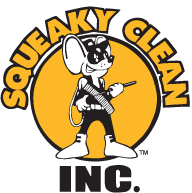Deck Sealant for Safety
Chromated copper arsenate (CCA) is a pesticide commonly used in pressure-treated wood. It protects wood from deterioration, thus prolonging the life of outdoor wood structures such as decks and children’s play equipment. Recent EPA studies have shown that rainwater leaches CCA from the treated wood. A significant pesticide residue can be left on the wood’s surface. This pesticide residue can easily be wiped from the wood surface and picked up on hands or clothing.
The most toxic part of the CCA pesticide formulation is arsenic. Arsenic is a known human carcinogen which can be toxic to the skin and internal organs. These effects require long-term exposure and take years to develop. At high doses arsenic is an acute poison that can cause death. However, the levels of exposure possible from arsenic in wood are too low to cause such acute effects. The major health concerns are that daily contact with arsenic leached from CCA treated wood might, under certain circumstances, lead to increased risk of long-term health problems.
During treatment, the boards are dipped into a CCA bath under high pressure. This forces arsenic into the wood, but it doesn’t seal the wood against the weather. Once in the environment, rain water can penetrate into the wood and dissolve arsenic, bringing it back to the surface. As wood ages and cracks the process speeds up. New boards may also have a surface residue of arsenic that had not penetrated into the wood during the treatment process. The amount that leaches is enough to contaminate the soil immediately below and next to the wood structure, and to leave a residual coating of arsenic on the wood surface that can be dislodged.
Studies performed by the EPA and the U.S. Consumer Product Safety Commission show that arsenic is readily available on the surface of CCA treated boards. The amount of arsenic that children and others can pick up from these boards may be greater than exposure from other sources. Arsenic is a natural trace element present in soil, water, food, and air. It is now clear that CCA treated wood can be a major source of arsenic for children who frequently play on treated play sets and decks. Arsenic is easily taken up onto hands from simple contact with the wood surface. Young children with frequent hand mouth activity may swallow some of this arsenic. While the amount taken up depends upon many factors, studies show that both new and old boards have a significant amount of arsenic on the surface. Given the widespread use of CCA-treated wood it is possible for some children and others to be exposed to arsenic on a daily basic.
A large amount of pressure treated lumber has been used over the last twenty years, for everything from decks and play sets to picnic tables and retaining walls, and though generally considered safe some steps need to be taken to cut down on the amount of CCA that is able to leach out of the wood. For existing CCA-treated wood, the best way to minimize arsenic leaching is to seal the wood by applying a sealant every two years. This practice is in accordance with the wood manufacturer’s recommendations for maintenance of treated wood. Proper sealants will not only help keep the wood from cracking and splitting, it can also greatly decrease the amount of arsenic that can form a residue on the wood’s surface. EPA studies suggest that penetrating oil based stains are among the most affective sealants that can be used to prevent exposed outdoor surfaces from leaching arsenic.
Hand washing after contact is effective in reducing exposure, but is only practical after a child is finished playing. Sealants are the best way to protect yourself and your family from arsenic exposure to CCA from lumber and we will be glad to contact you every two years so that your deck stays properly protected. Deck maintenance is about more than protecting your deck from the elements, it is also about protecting you from your deck.




